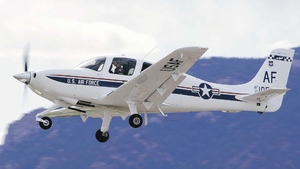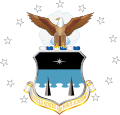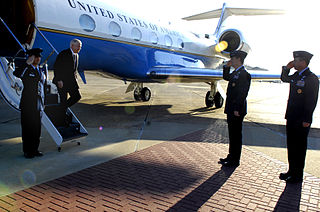
The 42nd Air Base Wing is a United States Air Force unit assigned to Air University of Air Education and Training Command. It is stationed at Maxwell-Gunter Air Force Base, Alabama and is the host unit for Maxwell-Gunter. The wing's primary mission is to support all activities of Air University, the 908th Airlift Wing and other tenant units stationed at Maxwell-Gunter.

The 42nd Attack Squadron is a dormant United States Air Force unit assigned to the 25th Attack Group and formerly located at Creech Air Force Base near Indian Springs, Nevada. It flew the General Atomics MQ-9 Reaper unmanned aerial vehicle. The 42nd oversaw the training and combat deployment of aerial vehicle and sensor operators assigned to the Reaper.

The 33rd Flying Training Squadron is a United States Air Force squadron based at Vance Air Force Base near Enid, Oklahoma. It is a part of the 71st Flying Training Wing.
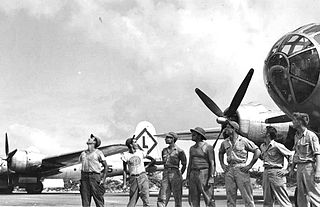
The 331st Bombardment Group is an inactive United States Air Force unit. It was last assigned to the 315th Bombardment Wing, being stationed at Northwest Field, Guam. It was inactivated on 15 April 1946.
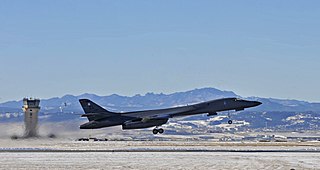
The 37th Bomb Squadron is part of the 28th Bomb Wing at Ellsworth Air Force Base, South Dakota. It operates Rockwell B-1 Lancer aircraft providing strategic bombing capability.

The 96th Air Refueling Squadron was a unit of PACAF's 15th Wing at Joint Base Pearl Harbor–Hickam, Hawaii in partnership with the 203rd Air Refueling Squadron and 154th Maintenance Group of the Hawaii Air National Guard. It was inactivated on 3 September 2015.
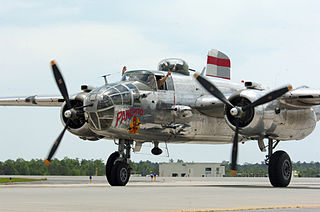
The 41st Tactical Group is an inactive United States Air Force unit. Its last assignment was with the 7217th Air Division at Cigli Air Base, Turkey, where it was inactivated in 1970. From 1966 to 1970 the group controlled deployed fighter squadrons.

The 403d Bombardment Squadron is an inactive United States Air Force unit. It was last assigned to the 43rd Bombardment Wing at Carswell Air Force Base, Texas, where it was inactivated on 1 January 1961.

The 69th Bomb Squadron is an active United States Air Force unit. After being inactivated on 31 December 1993, it was reactivated on 3 September 2009 at Minot Air Force Base, and assigned to the 5th Bomb Wing. The squadron operates Boeing B-52H Stratofortress aircraft.

The 98th Operations Group is a component unit of the Nevada Test and Training Range, assigned to the United States Air Force Air Combat Command. The group is stationed at Nellis Air Force Base, Nevada. It provides day-to-day control of the Nevada Test and Training Range (NTTR) and directly supports Air Force, joint and multi-national test and training activities; and operates two Air Combat Command bombing ranges; the NTTR and Leach Lake Tactics Range, near Barstow, California.

The 319th Operations Group is a United States Air Force unit assigned to 319th Reconnaissance Wing, Air Combat Command. It is stationed at Grand Forks Air Force Base, North Dakota operating RQ-4 Global Hawk remotely piloted aircraft (RPA) in the intelligence, surveillance and reconnaissance (ISR) role.

The 28th Operations Group is the flying component of the United States Air Force 28th Bomb Wing, stationed at Ellsworth Air Force Base, South Dakota.

The 75th Bombardment Squadron is an inactive United States Air Force unit. It was first established as a bombardment squadron shortly before World War II. It was reactivated during the Cold War as a Strategic Air Command (SAC). Its last assignment was to the 4039th Strategic Wing at Griffiss Air Force Base, New York, where it was made inactive on 1 February 1963.
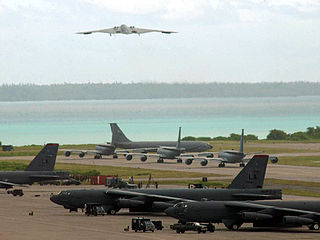
The 40th Expeditionary Bomb Squadron is a provisional United States Air Force unit. It was assigned to the 40th Air Expeditionary Wing, possibly stationed at Diego Garcia. Its current status is unknown.

The 348th Reconnaissance Squadron is an active United States Air Force squadron, assigned to the 319th Operations Group. It was activated at Grand Forks Air Force Base, North Dakota on 19 September 2011. It currently operates the RQ-4 Global Hawk, High Altitude Intelligence, Surveillance, and Reconnaissance (HAISR) Remotely Piloted Aircraft (RPA).

The 347th Bombardment Squadron is an inactive United States Air Force unit. It was last assigned to the 4047th Strategic Wing. It was inactivated at McCoy Air Force Base, Florida on 1 April 1963.

The 355th Tactical Airlift Squadron is an inactive United States Air Force unit. Its last assignment was with 906th Tactical Airlift Group stationed at Rickenbacker Air National Guard Base, Ohio. It was inactivated on 1 July 1982.

The 7th Bombardment Squadron is an inactive United States Air Force unit. It was last assigned to the 34th Bombardment Group at Sioux Falls Army Air Field, South Dakota, where it was inactivated on 28 August 1945.
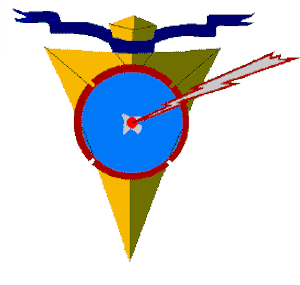
The 560th Fighter-Day Squadron is an inactive United States Air Force unit. Its last was assigned to the 12th Fighter-Day Wing, stationed at Bergstrom Air Force Base, Texas. It was inactivated on 8 January 1958.

The 561st Fighter-Day Squadron is an inactive United States Air Force unit. Its last was assigned to the 12th Fighter-Day Wing, Tactical Air Command, stationed at Bergstrom Air Force Base, Texas. It was inactivated on 8 January 1958.

